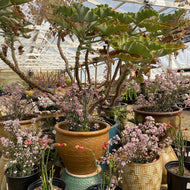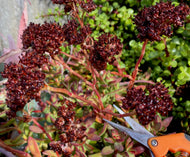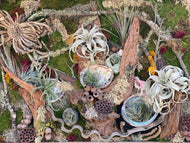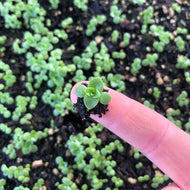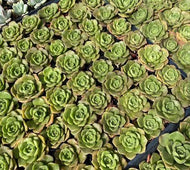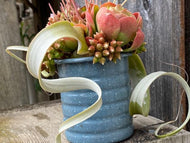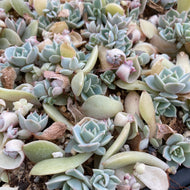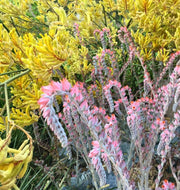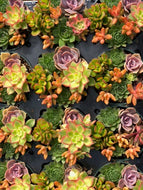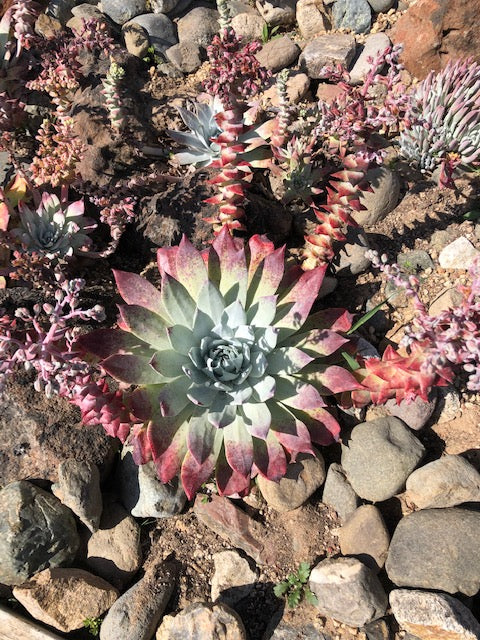Succulents develop dazzling colors as a response to colder temperatures as well as other environmental stresses like changes in water and light during winter months.
Plants produce different pigments during these environmental changes to protect themselves from the elements.
These pigments, such as chlorophyll (green), carotenoid (yellow to orange) and anthocyanins (reds to purples) play an important role during the process of photosynthesis.

(Top Row): Crassula 'Campfire'
(Bottom Row): Echeveria elegans
The plants on the left have been growing outside, exposed to the elements and extreme temperature fluctuations. The plants on the right have been been grown in our greenhouses with less exposure to colder temperatures.
Chlorophyll (green)
Most succulents will turn green in the shade because chlorophyll is responsible for capturing sunlight to keep the photosynthesis process going.
Anthocyanins (red / purple)
As plant is exposed to extreme temperatures or increased sun exposure the cells of the plant contain more anthocyanins.These anthocyanins protect the plant against overexposure to UV light as well as extreme temperature changes. Anthocyanins are more stable in colder temperatures. This is why you often see succulents color up in the winter months.
Carotenoid (yellow)
Throughout the summer season when photosynthesis is occuring at a great rate, large stocks of pigment that appear green (chlorophyll) are produced and carotenoid is concealed. However once the temperature drops and photosynthetic activity decreases, the production of chlorophyll decreases as well and under the influence of carotenoid one can observe more yellow in the succulent.

